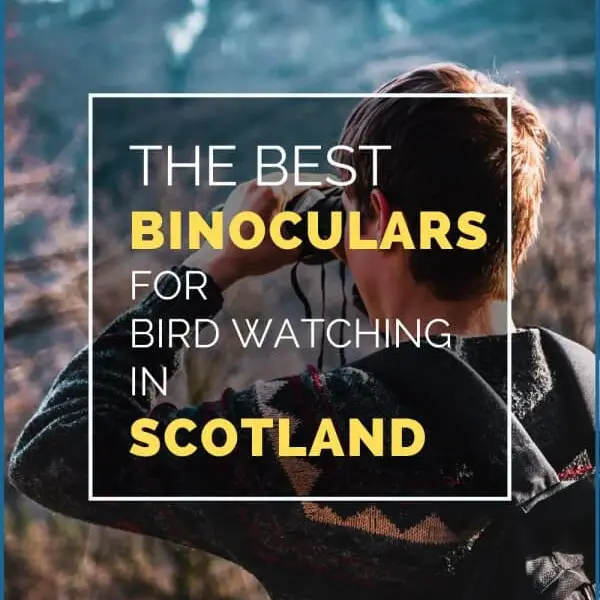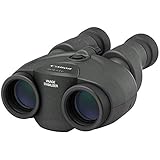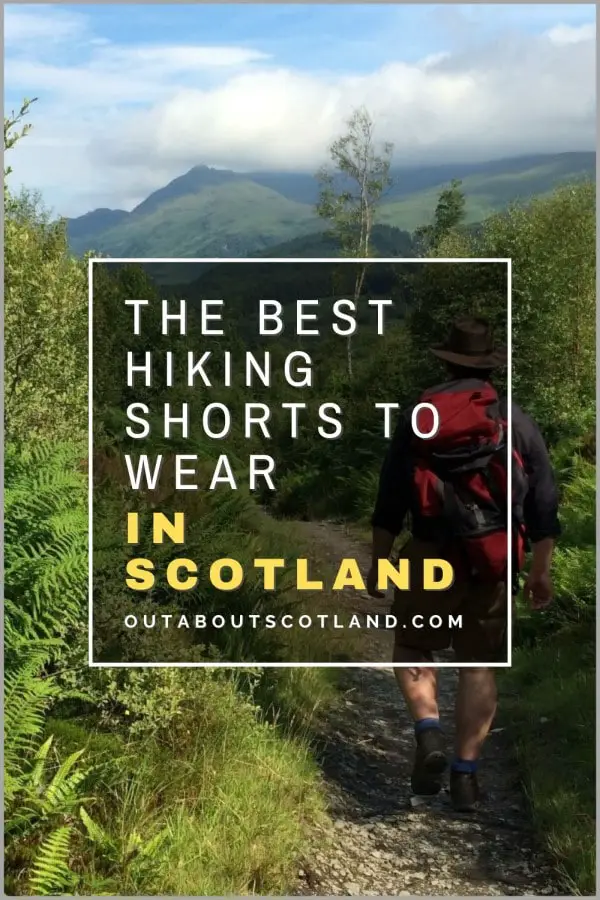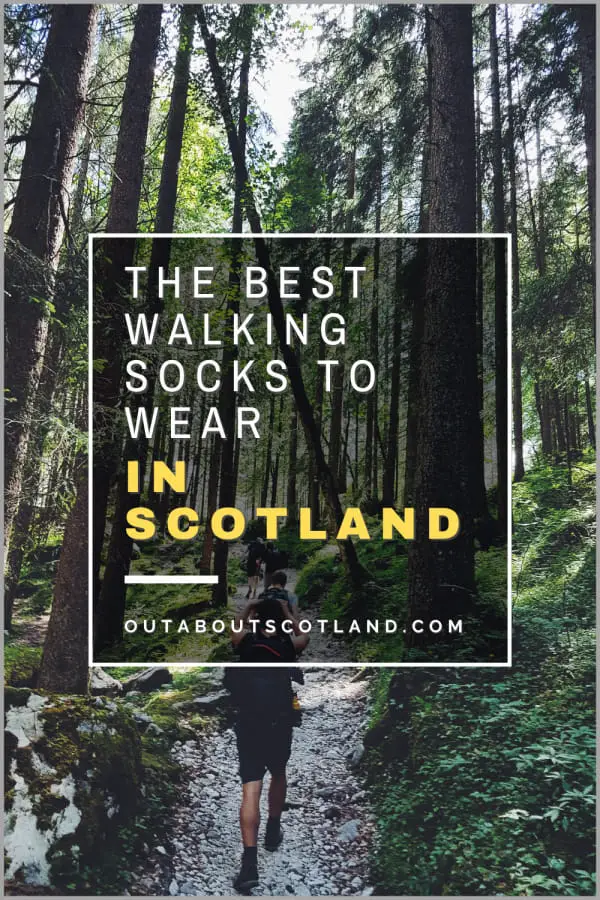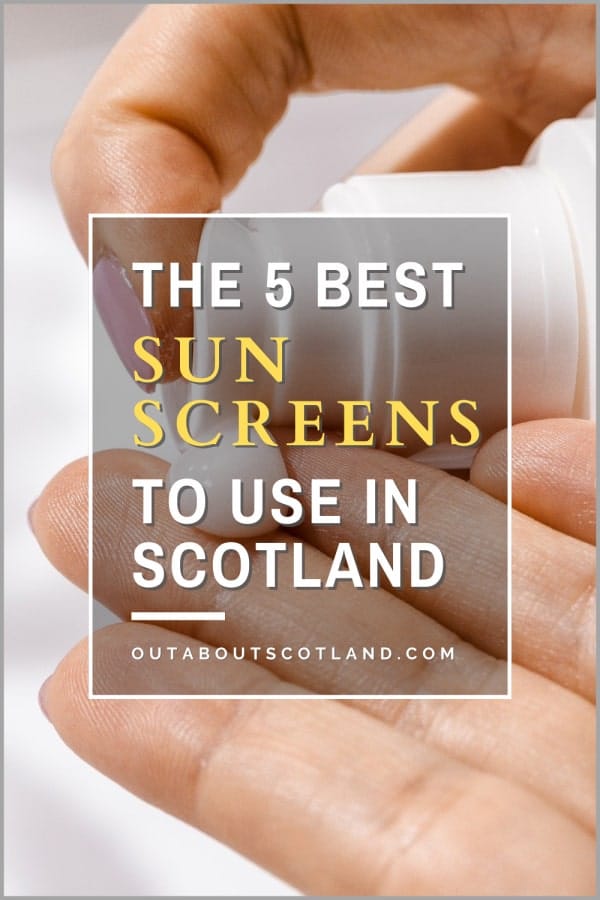Aside from a good waterproof jacket and sturdy hiking boots, the one accessory that will drastically improve your sightseeing visit to Scotland is a quality pair of binoculars.
Scotland’s landscapes are stunning and I guarantee you will notice something on every visit that you wish you could view up close. A case in point is Scotland’s wildlife, but iconic animals like red deer and sea eagles are renowned for being shy and very difficult to approach.
A pair of binoculars brings the action to you, and a small investment will repay you many times over with wonderful sights you’d otherwise miss.
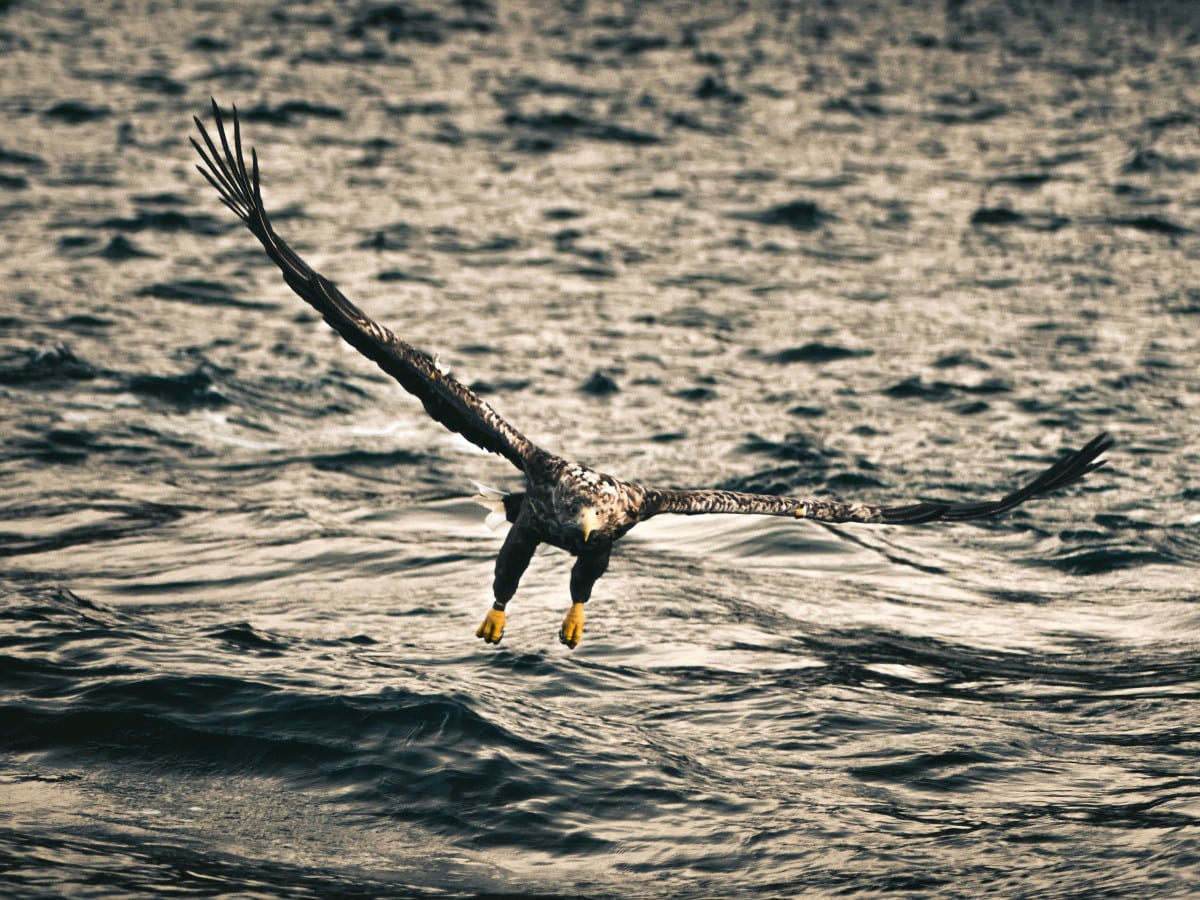
In this guide, you’ll find a selection of 5 top-rated binoculars for birdwatching that cover all the bases when it comes to viewing wildlife from a distance, plus a few hints and tips to help you make the most of using them in the great outdoors.
In a hurry? If you don’t have time to read the reviews, follow the link below to purchase my #1 recommended binoculars on Amazon.
Recommended binoculars for bird watching in Scotland: Canon 10×30 Image Stabilized
The Best Binoculars to Use in Scotland

When choosing the right pair of binoculars, there are several factors to consider, from the size and weight to the magnification and design, as well as the importance of durability and lens quality.
Choosing the right pair of binoculars is far easier once you understand the main features, so at the end of the following list of recommendations you’ll find an overview of the features to look for and the different types of binoculars you can buy.
The list below details binoculars that excel in one area or another, and they’re all backed by lots of positive online reviews, so you won’t be let down by flimsy plastics and terrible optics.
They’re all available on Amazon so if you purchase a pair and decide they’re not right for you, you’ll be able to take advantage of Amazon’s superb returns policy (I also recommend getting an Amazon Prime membership to make full use of their class-leading delivery service).
Top 5 Recommended Binoculars
Canon Image Stabilized Binoculars
Best Binoculars for Birdwatching
Let’s address the elephant in the room with these binoculars. They’re around £500, which is no small chunk of change in anyone’s book. Even so, they sit firmly at the #1 position in this list for several reasons, and I’m recommending them as they’re the model that I eventually picked after months of boring my other half with countless tests in shops and multiple Amazon returns – thank you again, Amazon Prime membership.
8×25 or 10×30 seems to be the sweet spot for magnification and brightness as birds in flight are nicely magnified and the field of view is wide enough that you get a great overview of the landscape.
In addition to the reassurance and guarantee that comes with a big brand like Canon, these binoculars have superb image quality, they’re very well-built with ultra-tough plastics, the lenses are distortion-free, and they come with a quality strap, case and lens covers.
The killer feature, of course, is the optical image stabilization which is activated by simply pressing a button near the focusing wheel. As soon as you do the image stops shaking about and everything becomes crystal clear, even if you’re looking out of a moving car (passenger side…).
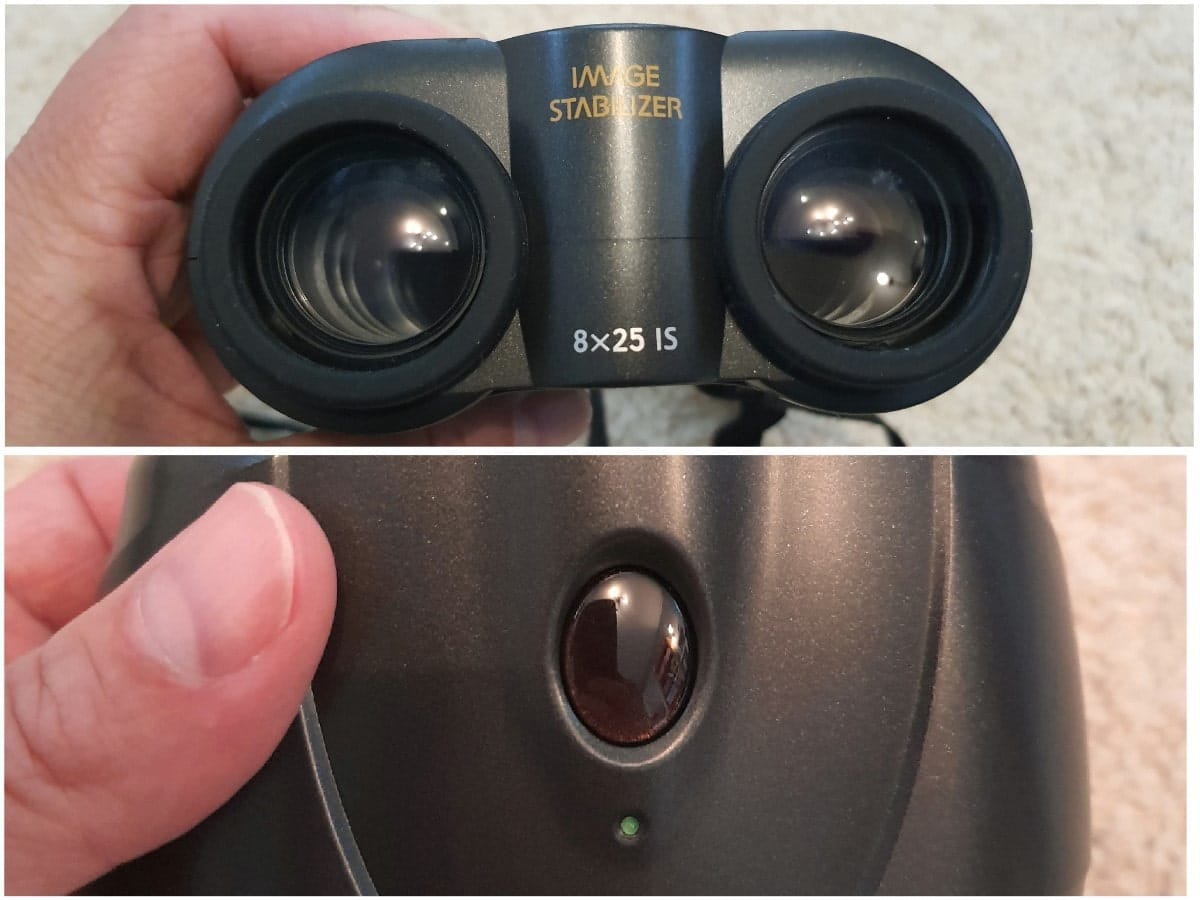
For anyone worried about battery life, I’ll just mention that I only change the battery once a year, although bear in mind that’s my experience and the official battery life is rated at just 9 hours. My only negative is that there’s a littletle bit of chromatic aberrationwhen viewing certain subjects, but it’s barely noticeable.
In summary, the 8x or 10x magnification coupled with a 6° field of view and shake-free images more than make up for the price. Just consider them an investment that will last for years and will repay you many times over with amazing wildlife-watching opportunities.
*Chromatic Aberration is a purple fringing effect seen along edges with strong changes in contrast (a tree branch set against a bright sky for instance). Almost all binoculars suffer from it to varying degrees.
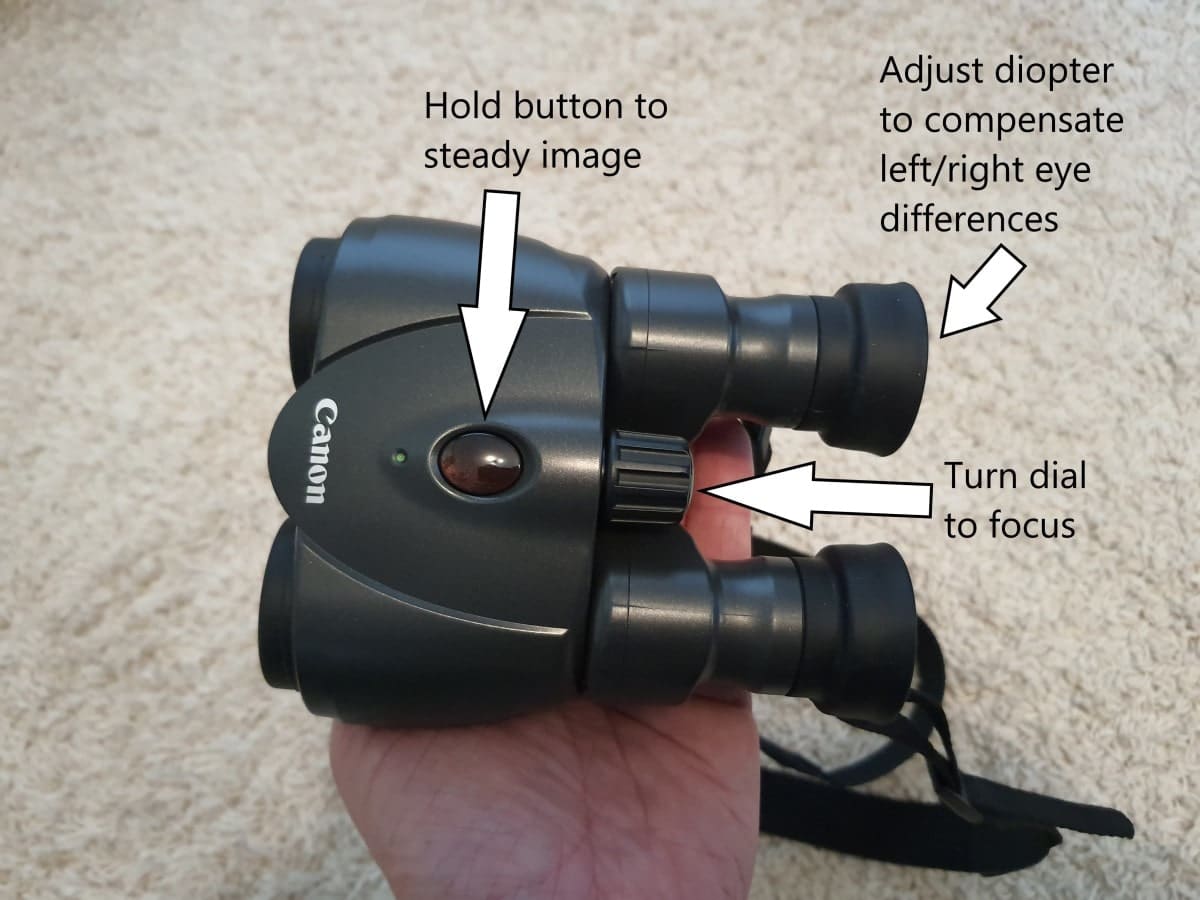
- PORTABLE - high-quality binoculars with 10x magnification – ideal for use as travel, birdwatching, spectator sports and concert binoculars.
- CLARITY - Experience a clear, flat field of view from edge to edge thanks to Porro II prism design and field flattener lenses.
- STEADY VIEW - A powerful optical Image Stabilizer counteracts your movement to deliver a stable steady view.
- COMFORT - Designed for ease, durability and comfort the 10 x 30 IS II small binoculars feature large rubber eyecups and easy fingertip controls.
- CANON OPTICS - Enjoy high resolution and bright accurate colours thanks to Canon’s precision optics with the Super Spectra lens coating.
Celestron Skymaster 25×70
Best for Stargazing and Wildlife
Before I begin with the positives I feel I should first mention the negatives with these binoculars as they’re a bit of a niche product. You’ll notice that they’re very high-powered and have a very bright objective lens, but it’s the magnification that’s both a positive and a negative feature.
Celestron primarily makes optics for stargazing so their magnification level is phenomenal and if you’re hoping to view faraway objects these are some of the best bins you can get. The downside is they’re heavy and bulky and really only suitable for use with a tripod, but thankfully a tripod mount is included in the box along with handy accessories like lens caps, a rain guard, a neck strap and a carry case.
The high magnification also means the field of view is narrow at just 2.7°, so I wouldn’t purchase the Skymaster’s for landscapes, but if you set up a stable tripod and fix itn a static distant object (a bird nest, for example), you’ll get ultra-clear, undistorted images. They also double up for moon and stargazingthanks to their extremely bright objective lenses, and having tested a pair, I can confirm you’ll have no worries about using them outside as they’re built like a tank.
Perhaps even more important than the magnification factor is the quality of the lenses and this model from Celestron blew me away with how sharp they resolve images, especially at the price which is a complete bargain in my book.
- POWERFUL 25x MAGNIFICATION: With our SkyMaster 25x70 porro prism binocular, you get large 70mm objective lenses offering maximum image brightness in low-light and long-range conditions
- FOCUS & OPTICS: Large centre focus knob for ultra sharp focus across the field of view, with multi-coated optics for sharp, clear views
- PROTECTION & GRIP: Protective rubber covering for ultra-firm grip that meets the special demands of extended viewing sessions
- HIGH PERFORMANCE: Suitable for terrestrial or astronomical viewing, especially over long distances
- INCLUDED ACCESSORIES: Tripod adapter and carry case for safe travel and storage
Dflamepower 30×60
Best Budget Binoculars for Bird Watching
The DFlamepower 30×60 are binoculars I purchased off Amazon when I didn’t really know what I wanted, but I was so impressed I kept them and they now sit permanently at the bottom of my backpack.
They’re easily the best lightweight binoculars that I’ve found to date, the quality of the lenses is pretty good for the price, they feel well-made, they’re semi-waterproof, and they have an impact-resistant rubber coating. And have you seen that price? 20 quid is an amazing deal for what you get and I guarantee you’ll use these in many situations even when you’ve got a premium pair of binoculars with you.
An example of this was a boat trip I took on the Isle of Skye, where I was terrified of dropping my £500 Canon’s into the sea but was more than happy to throw these DFlamepower 30x60s around. As a backup or a pair for your kids and the the other half to use, they really can’t be beaten.
The magnification factor is reasonable but you have to bear in mind these are cheap optics so they won’t be anywhere as good as anything from Canon, Olympus, Nikon etc, but they’re good enough to get by if you randomly catch sight of wildlife while hiking around Scotland.
They’re good for landscape viewing thanks to their moderately wide field of view and they have a foldable hinge in the body so you can pop them into a jacket pocket with ease. They even have adjustable eyepieces to use with spectacles which is a feature rarely found at this price point, plus the lenses have a very effective anti-glare coating.
- 1. Magnification: 8X; Line Field: 126m/1000m; Exit Pupil Diameter: 3mm; Exit Pupil Distance: 11mm. Compact size of the binoculars for people of all ages: 10.1cmx3cmx9.1cm.Full Optical Lenses provides good clear picture.Enjoy much longer distance, more distinct, high magnification and clear optical at an unbelievable value!
- 2.Easy adjustment and rapid focusing with the focus wheel, fast adjust the focal length. Adjustable eye widths, makes this Optics Binoculars Telescope suitable for people of all ages, good choice especially for holiday present. Surprise them, they will love it! We will be pleased to help if you cant focus the binoculars.
- 3.Natural rubber material and the unique anti-skid design in the back prevents it to slip or shake. Fully coated optics for increased brightness, super light transmittance, suitable for all-weather. Note: Please do not use it directly to the sun as this could cause serious damage to your eyes.
- 4.Can be folded up very small so that easy to slip into a pocket or bag and then come in their own storage bag. Fold up size: 6cmx3cmx9.1cm. It is compact & light-weight, and the carrying strap makes this binocular easy to carry. Buy it now, it will be your new favorite vacation companion!
- 5.This Binoculars Telescope is a good ideal for campers, hunters, sports. Excellent for Watching dolphins, Seabirds, animals,etc. If you don't know how o use your binoculars, we will be pleased to send you a detailed description.
Zexrow 10×22
Best Binoculars for Kids
These Zexrow 10×22 binoculars were originally bought for a 5-year-old to play with during country walks but there’s been more than one occasion where I’ve nabbed them for myself. As a child’s first pair of binoculars you really can’t go wrong because at less than £15 it doesn’t matter too much if they drop them – which they will – or lose them.
They’re a typical roof prism design which means they can be folded away and I can confirm they’re tiny when folded. Easily small enough to fit in a child’s jacket and also small enough to fit in an adult’s trouser pocket.
The colours shown here are a cheerful blue and pink that have been designed with children in mind, but they also come in red, orange, and even camouflage, plus there’s a plain black version that’s more than suitable for an adult to use.
The lens quality is nothing more than average and it’s obvious corners have been cut in the manufacture of the optics to keep the price down, but kids under 10 won’t notice any difference between these and the ten times as expensive binoculars their mums and dads are using.
The 22 mm objective lens diameter is actually quite bright and along with a 7° field of view they’re perfect for quickly scanning the horizon to look for wildlife in the near distance. They’re also splash-proof, made of tough impact-resistant polycarbonate and have soft rubber eyepieces.
The main negative I have is the hinge mechanism feels a bit cheap (although they are cheap so that’s to be expected I guess) and I’m not sure how long they’ll last. What I can say, however, is that our pair have been chucked in a backpack countless times and they’re still going strong a year later, which speaks volumes I reckon.
- Explore Nature World: Easy to Use, Suitable for boys and girls to bird watching, learning, star watching, hunting, sports competitions, theater, boating, hiking, learning, travel, outdoor fun and enjoying the wilderness.
- Lightweight & Small & Shock Proof: Mini design, children can throw them into your backpack each day without hesitation. Soft rubber surrounded provides better protection of the lens during falls. Durable polycarbonate plastic and rubber armored exterior can withstand absorbs shock when drops or falls on floors.
- Super Safety: Soft rubber surrounded eyepieces are included for eye protection so children don't hurt their eyes or face. Non-slip scratch, the grip has been ergonomically patented designed to fit the hands of kids.
- Professional Real Binoculars: Easy to focus, the leaves of a tree 131ft/1000m away came into sharp focus. The compact binocular can be adjusted by turning the center knob to easily match the eye distance gap for each child.
- Crystal Clear View: Superb high-resolution maginifcation of 20X with the 7°viewing angle, your child can see the entire visual wide field for capturing objects easily. The BAK 4 FMC prism green multi-layer broadband coated can control optical reflection to create crisp and colorful images.
Praktica 8×42 Waterproof Ambassador
Best Binoculars for All-Season Bird-Watching
Praktica is a well-known brand that has been producing quality optics for years, from cameras to telescopes and binoculars. One thing I love about Praktica is their build quality which is almost up there with Nikon but comes in at a much cheaper price, and these 8×42 bins are no exception.
In the hand, they feel weighty but not overly heavy and the folding mechanism on the hinge has a reassuringly solid feel to it. In fact, I suspect you could drop these multiple times and you’d see no damage to the optics whatsoever.
These 8×42 binos offer good magnification coupled with a high level of brightness and they’re light enough so that you can hold them for a long time without experiencing much shakiness.
The main feature, though, is their outdoor capabilities, and for long excursions into the wilds of Scotland they’re second to none thanks to their nitrogen-purged lenses that prevent water ingress even if it’s pouring with rain. A side effect of being nitrogen purged is a resistance to fogging which is important if you experience rapid temperature changes such as being indoors and then going outdoors.
Other binoculars will often develop a fine mist across the surface of the internal optics which makes them virtually useless until they completely dry out, but nitrogen-filled lenses can be used in all weather conditions with a guaranteed clear lens.
Other positives include the fact they’re easily pocketable when folded, the image is nice and bright thanks to that 42 mm objective lens, they have a very effective anti-reflective lens coating and they’re incredibly easy to use. Everything about these binoculars screams quality and that includes the accessories, so it’s surprising they’re so affordable.
These things will last you years and years so if you’re after a pair of general-purpose waterproof binoculars that won’t break the bank you’ll struggle to find anything better in my opinion.
- ✅ 70+ YEARS - Praktica, a trusted manufacturer of optics since 1949. Customer support based in UK.
- ✅ OBJECTIVE LENS - 42mm Objective Lens so that you can see your target in great detail.
- ✅ MAGNIFICATION - Zoom in on your subject by 8x
- ✅ ED BAK-4 GLASS – Delivers razor sharp imagery with an impressive resolution.
- ✅ LARGE FIELD OF VIEW – 8.1° Angular Field of View, focus in on your subject at 1000metres with a wide field of view of 142m/425ft.
- ✅ PREMIUM MULTI-USE BINOCULARS - Ideal for birdwatching, hiking, outdoors, nature, stargazing, safari, surveillance and sports.
- ✅ LENS COATING – Fully multi-coated lenses with silver phase-corrected prisms provide high contrast images and superior light transmission.
- ✅ WATERPROOF - The lightweight yet waterproof magnesium chassis protects your binoculars from unexpected weather without weighing you down.
- ✅ EYE RELIEF – 17.6mm extended eye relief provides adjustable eye positioning for more comfortable viewing.
Features to Look For in Binoculars
1- The most important feature to look for when buying binoculars is their magnification level and their objective lens diameter. This is detailed on every pair with a number that looks like 8×20, 10×50 or something similar.
Some binoculars also have B and G/RA designations where B means they have push-down eyecups for use with spectacles and GA or RA means the body is rubberized and protected against knocks.
2- The first number explains the magnification of the binoculars so a pair that is 8×20 has a magnification factor of 8 times, i.e. when looking through them an object will appear 8 times closer than looking at it with your naked eye.
Before you rush out and look for the highest magnification number consider that it also affects your field of view, so the higher the number the less landscape you will see without having to pan around. A good magnification for wildlife and landscapes is 8x or 10x.
3- The second number relates to the objective lens diameter which is the size of the lens that lets in light. This determines how bright the image will appear when you look through the eyepiece with higher numbers equalling a brighter image.
The downside is that binoculars with large objective lens diameters are big, heavy and more expensive. As a rule, a 30 mm diameter (e.g. 8×30) is considered standard and easy to handhold. Anything smaller is usually compact enough to be pocketable, and anything larger usually requires a tripod for extended use.

4- Speaking of extended use, if you want binoculars with a high magnification factor and a high objective lens diameter you should look for a pair that has a tripod mount. These are labelled as tripod adaptable and they will either have a metal 1/4″ or 3/8″ metal thread built-in, or a manufacturer-specific mount that clips onto the body.
A tripod (or monopod) enables you to steady heavy binoculars so you don’t get a shaky image and they’re invaluable for preventing neck and backache. The main negative of using a tripod is that it’s difficult to tilt the binoculars up and down. An easy-to-use lightweight solution that I can personally recommend is a compact collapsible monopod (Amazon link) that fits in a backpack.
5- If you want to go a step above tripods and monopods you’ll find a much more compact solution in binoculars that have image stabilization built-in. These binoculars use an internal battery-powered gyroscope to even out hand-held shakiness so the image remains (almost) perfectly still.
IS binoculars are a real game-changer and once you’ve tried them you’ll find non-stabilized bins severely lacking, although they come with the downside that they obviously need a battery to use them, they’re not as robust due to the sensitive electronics inside, and they’re much more expensive.
6- Other features to look for include robust construction and waterproofing. The former is almost always covered by purchasing bins from a well-known brand such as Nikon, Canon, Olympus etc, while the latter is dependent on the model, but unless you like sitting in the rain I wouldn’t say waterproofing is a necessity.
What is a necessity, however, are useful additions in the box including a neck strap, a protective case and lens covers. Bonus features include anti-glare and anti-fog coatings on the lenses, nitrogen purged lens bodies and mirror-coated prisms.
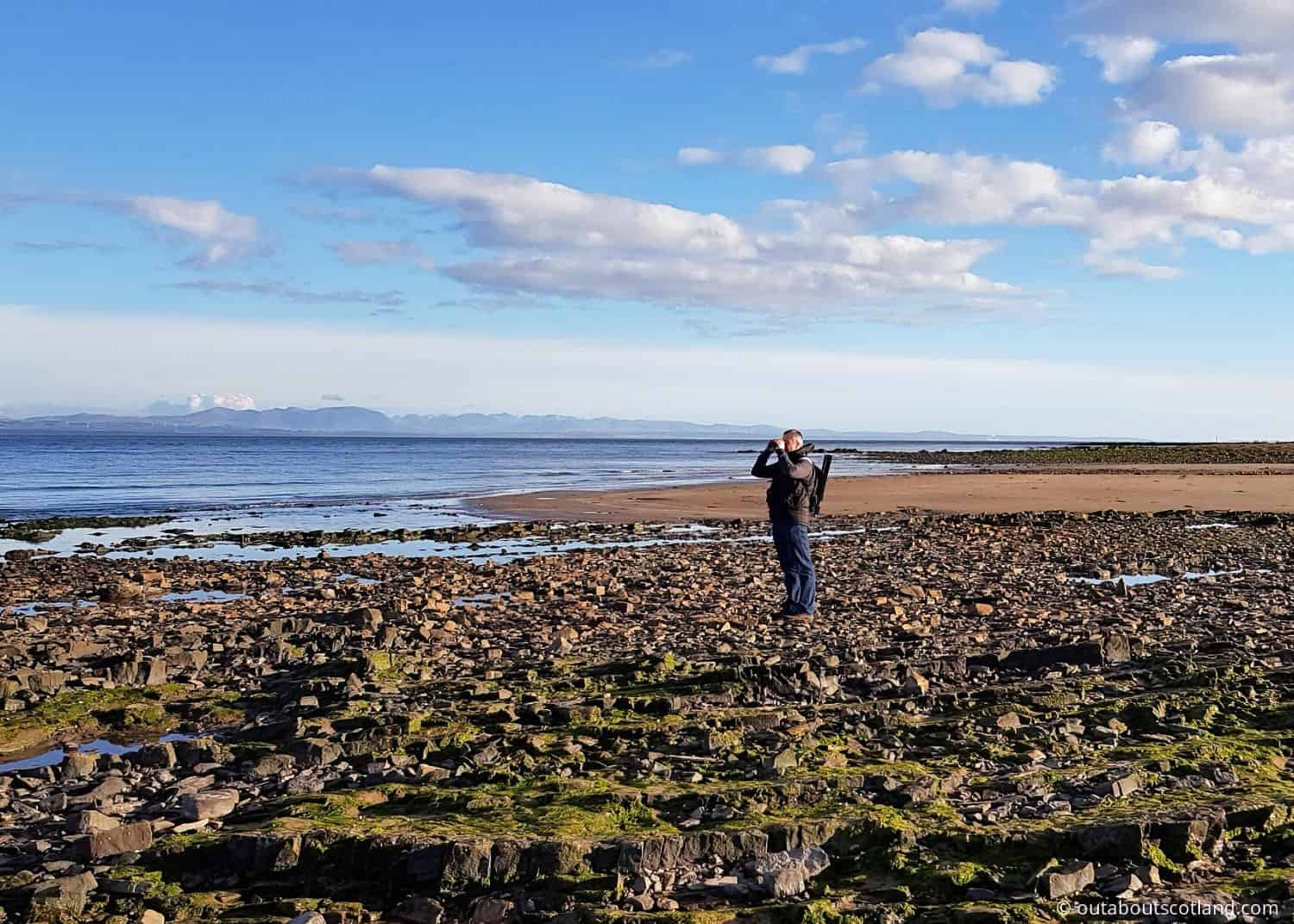
Types of Binoculars and How to Use Them
There are two main designs of binoculars for consumer use: roof prism and porro prism. They both produce identical images but the way they work is slightly different and they each have their pros and cons.
Roof prisms work by projecting light in a straight line from the objective lens (the part that receives light) to the prism and out to the eyepiece, and they’re instantly recognisable by their ‘H’ shape. Each lens arrangement is fitted inside a single straight tube connected by a bridge that can usually be folded in half, making them easily pocketable.
Roof prism binoculars are the more modern design and are increasing in popularity as they’re preferable for travel, but their optics still aren’t up to the quality of porro prisms.
This design is recognisable by its ‘M’ shape where the objective lens and eyepiece are not in line. Most porro prism bins cannot be folded in half, and they’re also heavier than roof prisms, meaning they’re more awkward to walk around with. On the positive side, they’re often cheaper and have higher-quality optics.
Whichever design you buy you will have to focus them properly to get the best image and this is where the central focusing wheel and the eyepiece dioptre come into play. The focus wheel is self-explanatory as it simply makes the image sharper depending on the distance of the subject, but the dioptre is an often misunderstood feature.
The dioptre is important as it compensates for the differences between the strengthss of your eyes, which can have a big impact on how sharp the image appears in your vision. It’s basically a’setit and forget it’ feature, so follow these easy steps as soon as you get your new bins home and never worry about it again:
- Look through the binoculars at a plain, bright scene and observe the two separate circles. There will be a central hinge in the body that can be adjusted, so fine-tune it until the two circles become a single circle.
- The dioptre will be on one of the eyepieces and is identifiable as a rotating part with numbers around it. While looking through the binoculars, cover the lens with the dioptre and turn the central focussing wheel on the body until the image becomes sharp.
- Keeping the image in the field of view, cover the other lens and turn the dioptre ring until the image becomes sharp. Take note of the number so that you can quickly readjust it if required.
- That’s it! If anyone else uses your binoculars they might have to repeat the process to get the optimum clarity for their vision.
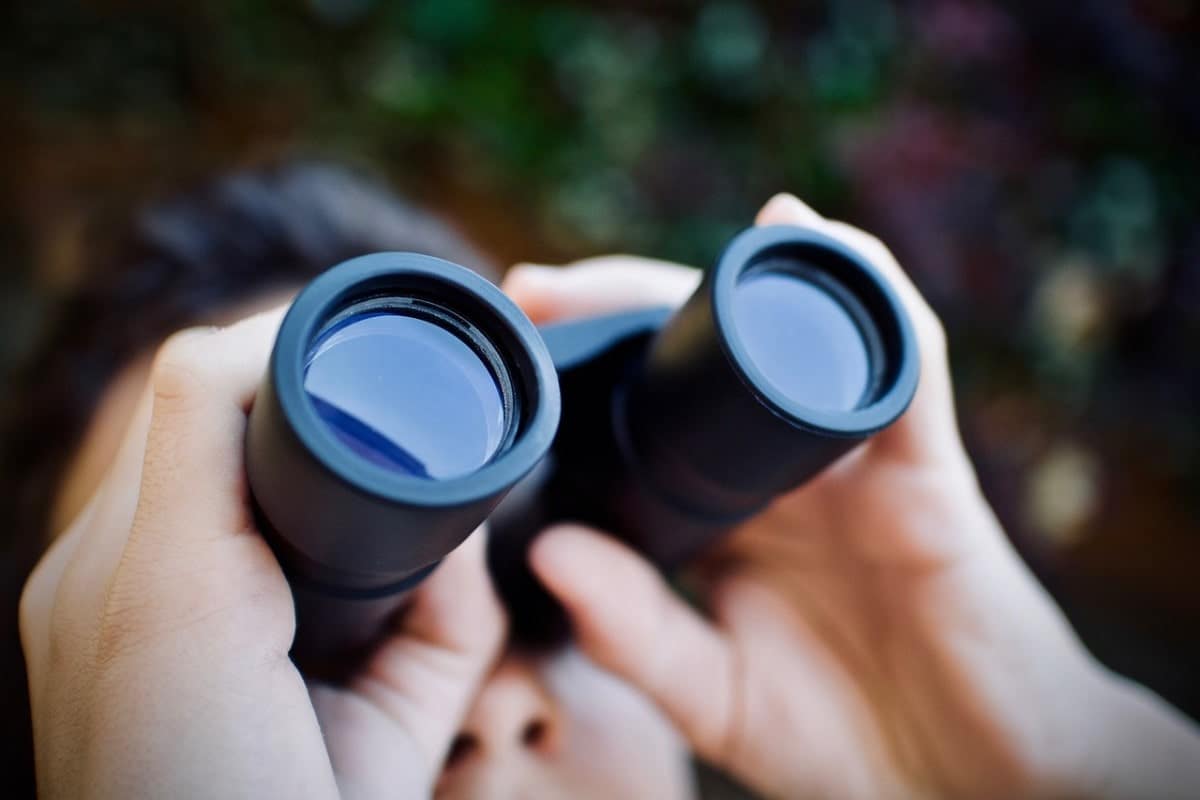
Why Do You Need Binoculars in Scotland?
A good pair of binoculars is almost a necessity for everyone who enjoys sightseeing in Scotland, whether it’s wildlife or general landscapes. Binoculars let you see so many more details than you would ever be able to see with your naked eyes and they’re invaluable for birdwatching in places that are difficult to access such as Highland mountains and coastal cliff faces.
But owning a pair of binoculars is pointless if they’re so heavy that you always leave them at home, and having a compact pair often means you sacrifice image quality and magnification.
Perhaps the biggest problem with using binoculars is the unavoidable shake that will make the viewed image blurry no matter how expensive the optics are, which is why I recommend image-stabilized bins by Canon.
They’re light enough to easily carry around your neck, small enough to throw in any size backpack, made from tough plastics and have excellent optical quality. Other manufacturers make image-stabilized models (Fujinon for example), but Canon has perfected the design and their price is reasonable for what you get.
Note that all product reviews on this page are the opinion of Out About Scotland and your experience with these products may differ.
Which is better for bird watching: 8×42 or 10×42?
There isn’t much difference between 8×42 and 10×42 binoculars for birdwatching.
8×42 binoculars have a lower magnification which can make them easier to hold steady and give you a wider field of view. On the other hand, 10×42 binoculars have a higher magnification which can provide a more detailed view of the birds you are observing.
Another important factor to consider is the size and weight of the binoculars. Both 8×42 and 10×42 binoculars are relatively compact and lightweight, but the 10×42 binoculars may be slightly larger and heavier due to their higher magnification which requires more glass in the optics.
What magnification binoculars are best for bird watching?
When it comes to binoculars for bird watching, the most important factor to consider is magnification. The general rule of thumb is to choose binoculars with a magnification of 8-10 times although this can vary depending on the distance of the birds you are observing and your personal preference.
Are 20×50 binoculars good for bird watching?
While 20×50 binoculars can be good for bird watching in some cases, they may not be the best choice for everyone. Higher magnification can make it more difficult to hold the binoculars steady which can be frustrating when trying to observe birds in flight.
In addition, higher magnification can also narrow the field of view making it more difficult to track birds as they move. For these reasons, many bird watchers prefer binoculars with lower magnification such as 8-10 times.

